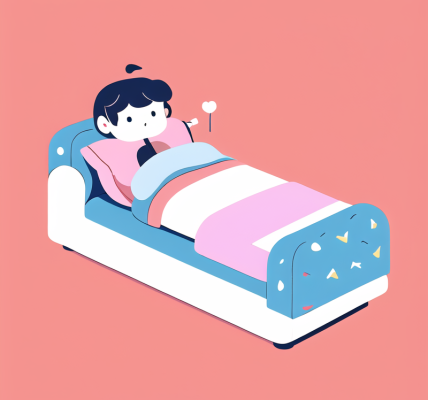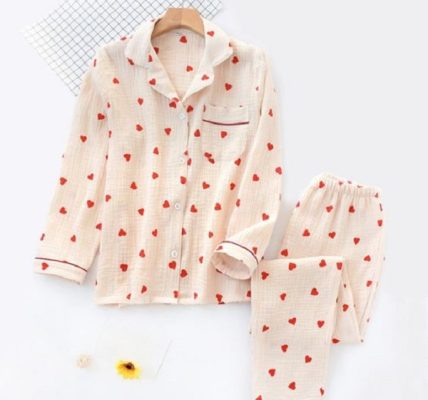Sewing your own pajama pants is a rewarding project that allows you to create comfortable and personalized loungewear. This guide will walk you through the process step-by-step, from choosing the right fabric to sewing the final seam. Whether you’re a complete beginner or have some sewing experience, you’ll find valuable tips and tricks along the way.
Choosing the Perfect Fabric
The fabric you choose will significantly impact the feel and comfort of your pajama pants. Consider the following factors:
- Softness: Opt for soft, breathable fabrics like cotton flannel, jersey knit, or satin.
- Weight: The weight of the fabric will determine the warmth and drape of your pajama pants.
- Care instructions: Choose a fabric that is easy to care for, such as machine washable and dryable.
Gathering Your Supplies
Before you start sewing, make sure you have the following supplies:

- Fabric of your choice
- Thread that matches your fabric
- Measuring tape
- Scissors
- Pins
- Sewing machine
- Elastic (for the waistband)
- Sewing pattern (optional)
Creating a Sewing Pattern
If you don’t have a ready-made pajama pants pattern, you can create your own using an existing pair of pants as a guide. Here’s a basic outline:
- Lay your pants flat on a large piece of paper.
- Trace the outline of the pants, adding seam allowances as needed.
- Adjust the pattern to your desired length and width.
- Cut out the pattern pieces.
Cutting the Fabric
- Fold your fabric in half, right sides together.
- Pin the pattern pieces to the folded fabric, ensuring they are aligned correctly.
- Cut out the fabric pieces, leaving about a half-inch seam allowance.
Sewing the Side Seams
- Pin the right sides of the fabric together along the side seams.
- Sew the side seams using a straight stitch.
- Press the seams open.
Creating the Waistband
- Cut a rectangular piece of fabric for the waistband, ensuring it’s wide enough to fold in half and accommodate the elastic.
- Fold the waistband in half lengthwise, right sides together, and sew along the long edges.
- Turn the waistband right side out and press it flat.
Attaching the Waistband
- Pin the waistband to the top edge of the pajama pants, right sides together.
- Sew the waistband in place, leaving an opening for the elastic.
- Insert the elastic into the waistband, using safety pins to guide it through.
- Sew the elastic ends together and close the waistband opening.
Hemming the Bottom
- Fold up the bottom of the pajama pants to your desired length.
- Pin the hem in place.
- Sew the hem using a straight stitch.
Finishing Touches
- Press your pajama pants to remove any wrinkles and create a polished look.
- Try on your new pajama pants and make any necessary adjustments.
Tips for Sewing Perfect Pajama Pants
- Use a walking foot on your sewing machine for smoother feeding of the fabric, especially with knit fabrics.
- Consider adding pockets for extra functionality.
- Experiment with different fabric combinations for a unique look.
- Don’t be afraid to add personal touches, such as lace or embroidery.
Embellishing Your Pajama Pants
Now that you have the basics of sewing pajama pants down, it’s time to add your personal touch. Embellishments can transform your loungewear into a unique and stylish piece.

- Lace and Trim: Add a touch of elegance with lace or ribbon trim along the waistband, cuffs, or pockets.
- Pocket Details: Customize your pajama pants with decorative pockets. Consider adding lace, embroidery, or applique.
- Button or Drawstring Waistband: Instead of elastic, opt for a button or drawstring closure for a different look.
- Embroidery or Applique: Personalize your pajama pants with your initials, a favorite quote, or a cute design.
- Patchwork: Create a one-of-a-kind pair of pajama pants by combining different fabric patterns and textures.
Troubleshooting Common Sewing Issues
Even experienced sewers encounter challenges. Here are some common issues and solutions:
- Uneven seams: Ensure your fabric is evenly pinned and that you’re using the correct stitch length.
- Gaping waistband: Adjust the elastic tension or add more gathers to the waistband.
- Fabric puckering: Check your needle size and thread tension. Use a ballpoint needle for knit fabrics.
- Difficulty with corners: Clip the corners of the seam allowance to reduce bulk and create a sharper corner.
Caring for Your Handmade Pajamas
To extend the life of your pajama pants, follow these care instructions:
- Check care labels: Always follow the fabric care instructions.
- Gentle washing: Wash your pajamas in cold water on a gentle cycle.
- Avoid bleach: Bleach can damage the fabric and colors.
- Low heat drying: If machine drying, use a low heat setting.
- Ironing with care: Iron on the lowest heat setting and inside out if necessary.
Sewing Pajama Pants for Children
Sewing pajama pants for children is a fun and rewarding project. Here are some tips:
- Choose child-friendly fabrics: Opt for soft, comfortable, and durable fabrics like cotton flannel, jersey knit, or interlock. Avoid fabrics with small embellishments that could pose a choking hazard.
- Smaller seams: Use smaller seam allowances to accommodate children’s smaller bodies.
- Elastic waistbands: Elastic waistbands are generally more comfortable for children and easier to adjust as they grow.
- Safety first: Ensure all seams are securely stitched and there are no loose threads that could become a choking hazard.
Sewing Pajama Pants for Plus Sizes
When sewing pajama pants for plus sizes, consider the following:
- Fabric choice: Opt for fabrics with good drape and stretch, such as jersey knit, rayon, or modal. Avoid stiff or heavy fabrics.
- Pattern adjustments: Make necessary adjustments to the pattern for a comfortable fit, such as adding length or width.
- Larger seam allowances: Use slightly larger seam allowances to accommodate curves.
- Supportive waistband: Consider using wider elastic or adding a drawstring for extra comfort and support.
Sewing Pajama Pants for Men
Men’s pajama pants often prioritize comfort and simplicity. Here are some tips for sewing them:

- Fabric choice: Opt for soft, breathable fabrics like flannel, jersey knit, or terry cloth. Avoid overly bulky or stiff materials.
- Loose fit: Men’s pajama pants typically have a looser fit compared to women’s. Ensure ample room in the hips and thighs.
- Elastic waistband: An elastic waistband is the most common choice for men’s pajama pants. It provides comfort and ease of wear.
- Pockets: Consider adding pockets for practicality. Side pockets or patch pockets are popular options.
- Minimal embellishments: Men’s pajama pants are often simpler in design. Avoid excessive embellishments.
Troubleshooting Common Sewing Mistakes
Even the most experienced sewers encounter challenges. Here are some common mistakes when sewing pajama pants and how to avoid them:
- Uneven seams: Ensure accurate pattern placement, use pins to secure fabric, and maintain a consistent stitch length. Press seams open for a flat finish.
- Gaping waistband: Adjust elastic tension, gather the waistband evenly, and distribute fullness evenly. Consider adding a casing for the elastic for a neater finish.
- Fabric puckering: Check needle size, thread tension, and fabric type. Use a ballpoint needle for knit fabrics and adjust stitch length as needed.
- Inaccurate measurements: Measure carefully and double-check before cutting fabric. Consider adding seam allowances and ease for a comfortable fit.
- Difficulty with corners: Clip the corners of the seam allowance to reduce bulk and create a sharp corner.
By anticipating and addressing these potential issues, you can increase your chances of sewing a perfect pair of pajama pants.
Sweet Dreams in Your Handmade Pajamas
Sewing your own pajama pants is a rewarding experience that allows you to create comfortable and personalized loungewear. By following these steps and incorporating your creativity, you can craft the perfect pair of pajamas for cozy nights at home.




